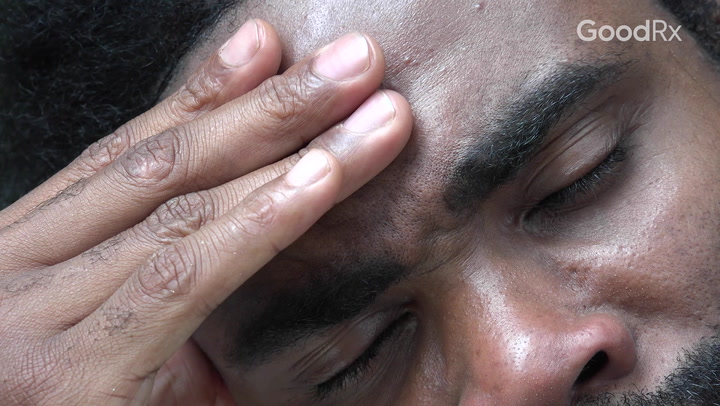
10 Causes of Toe Numbness and Tingling
Key takeaways:
Many people feel like their toes are numb from time to time. The feeling usually goes away, but if it doesn’t, it could be a sign of an underlying medical problem.
Peripheral neuropathy is a common cause for numb or tingly toes.
Get emergency medical care right away if you have toe numbness and other symptoms, such as facial droop, intense headache, weakness, or widespread numbness. These can be signs of a stroke.
Table of contents
You probably know that feeling of pins and needles in your toes. It may happen after you sit for too long in one position or fold your legs in a new way. This kind of sensation comes on quickly and can be uncomfortable, but it also gets better as soon as you move your feet.
But persistent toe numbness or tingling that doesn’t ease with movement is something different. It can be a sign of an underlying health issue, such as a foot injury or even diabetes.
Symptoms of toe numbness
People often describe toe numbness as a pins-and-needles sensation. But toe numbness can feel different for some people. You might experience symptoms like:
Tingling
Prickling
Pain
Burning sensation
Problems sensing temperature
Search and compare options
What causes numbness in toes?
There are several reasons your toes can feel numb. But obdormition is what likely first springs to mind when you think of toe numbness. Obdormition is the medical term for when a part of your body “falls asleep.”
Obdormition
Obdormition develops when you put too much pressure on a nerve. This can happen if you sit in a certain position for too long, sleep in a certain way, or even wear shoes that are too tight. The body reacts to a compressed nerve by lowering how much blood it gets and by downgrading the signals it sends.
This leads to that feeling of “pins and needles” (paresthesias) when your toes fall asleep. Paresthesias go away a few minutes after you relieve pressure on your nerves. And your nerves can handle a few hours of compression without getting damaged.
Peripheral neuropathy
Some causes of toe numbness aren’t temporary, and they can lead to permanent nerve damage. Peripheral neuropathy is a type of nerve damage that develops when the communication between nerves and the brain stops working properly.
The toes are particularly sensitive to peripheral neuropathy — and here are a few reasons why:
Toes are far away from the trunk of the body, the home of the heart and spinal cord. Toes need long nerves (from the spinal cord) and long blood vessels (from the heart) to reach them. This distance leaves lots of room for possible damage to the nerves and vessels, which can lead to mixed signals and numbness.
Toes are the lowest part of the body and must support the pressure of your body and gravity. This translates to a higher risk of mechanical damage.
Feet spend a lot of time in shoes, which can put pressure on them and cause damage.

Let’s go through some of the most common causes of peripheral neuropathy. These are in no particular order, and they can sometimes overlap.
What is neuropathy? Neuropathy is nerve damage that can cause tingling, numbness, and pain — often in the feet. Learn about the different types and common causes.
Numb feet from running? You aren’t alone. Here’s why toes and feet go numb when running — and what you can do to prevent it.
Common foot problems in older adults: You’re more likely to have a foot problem as you age. Here’s how to prevent and treat common foot issues.
1. Diabetic neuropathy
Diabetes is a common long-term (chronic) medical problem. It occurs when blood glucose levels are higher than what’s considered safe — and for too long.
High blood glucose levels can damage nerves (neuropathy). Because the nerves that communicate with your feet are the longest in your body, they’re some of the first nerves that diabetes affects.
The best way to prevent and treat diabetic neuropathy is to keep your blood glucose levels in your target range. You can do this through your diet, regular physical activity, and medications when necessary.
Read more like this
Explore these related articles, suggested for readers like you.
2. Other types of neuropathy
There are other forms of neuropathy (unrelated to diabetes) that can also affect the feet:
A low level of vitamin B12 is a common culprit, especially in people who follow a vegan diet or people with dietary limitations and restrictions.
Cardiovascular disease (peripheral artery disease) can lead to nerve damage in the legs and feet.
Long-term excess alcohol use can cause neuropathy through low levels of key vitamins.
Neurologic diseases, like multiple sclerosis and Guillain-Barré syndrome, can cause nerve damage.
Rare hereditary diseases, like Charcot-Marie-Tooth, can also cause neuropathy.
Certain medications — like some for the treatment of cancer, HIV, chemotherapy, and heart disease — can all lead to serious nerve damage.
Small fiber neuropathy involves degeneration of some of the body’s small nerve fibers and can start with numb toes.
3. Morton’s neuroma
A neuroma is extra growth of nerve tissue where it shouldn’t be. And despite the name, Morton’s neuroma isn’t actually a neuroma. Rather, it’s a neuropathy that affects certain nerves in your feet. It most commonly affects the ball of the foot, between the third and fourth toes, and it’s usually only in one foot. It often causes pain in addition to numbness and tingling.
People with Morton’s neuroma describe a burning sensation in the ball of their foot. Or it may feel like having a pebble in the shoe. This condition isn’t dangerous, but some people can also feel toe numbness.
People usually get better with shoe modifications and exercises for Morton’s neuroma. Sometimes a steroid injection in the foot can help.
4. Metatarsalgia
Metatarsalgia describes another kind of discomfort in the ball of the foot, specifically around the metatarsals — the bones in the feet that connect the midzone of the foot to the toes. People usually feel metatarsalgia between the second and fourth toes.
Metatarsalgia can happen for a few different reasons. Increased pressure on the foot, plus an underlying feature that makes someone more likely to have an injury (arched or flat feet, unforgiving footwear, underlying joint disorders) can lead to metatarsalgia. It can cause pain, numbness, or tingling in the bottom of the feet.
Treatments for metatarsalgia can include orthotics (a “metatarsal pad” in your shoes) and physical therapy as well as rest, ice, and pain relievers. You can also try foot exercises to help relieve the discomfort.
5. Tarsal tunnel syndrome
You may have heard of carpal tunnel syndrome, a condition that affects the median nerve in the hands and wrist. A similar thing can happen in the foot and ankle, and it’s called tarsal tunnel syndrome.
In tarsal tunnel syndrome, the main nerve that supplies the foot is compressed as it passes through the “tarsal tunnel,” a part of the ankle. This can lead to a burning type of pain, but it can also cause numbness in the foot and toes. These tend to be worse with long periods of standing or activity.
Tarsal tunnel pain and numbness usually lessen with rest and shoe modifications. There are also tarsal tunnel exercises that can help strengthen your foot and relieve pain. Ankle braces can also help to relieve the pressure and symptoms. If you still have bothersome symptoms, a surgical procedure that “releases” the nerve may help.
6. Frostbite
Frostbite occurs when cold temperatures outside the body damage tissues inside the body. The toes are particularly susceptible because they lose heat more easily than body parts closer to the core.
When you’re in a cold environment, the first sign of frostbite can be a prickling sensation in the toes. This can worsen to numbness, changes in skin color (to bright red, white, or blue), and even muscle and joint dysfunction that make it hard to balance.
You can help to prevent frostbite when you’re in cold weather by taking extra precautions like keeping your toes dry and warm. Get inside to a warm and dry place if you start experiencing toe pain and numbness out in the cold. If you do develop frostbite, get medical help right away. There are some medications and surgical procedures that can help. The quicker you get help with frostbite, the better.
7. Injury
It can be easy to injure a foot, even without doing strenuous activity. And any injury to the joints and ligaments in the feet can disrupt the nerves and lead to numbness in the toes. Runners or hikers on long backpacking trips can experience numbness and tingling. All types of extreme exercise can put your feet at risk, too. Yet simply wearing shoes that are too tight can also compress the nerves.
Other foot injuries that can lead to toe numbness include:
Foot or toe fractures from high-impact events like car accidents or falls
Stress fractures from repetitive activity
Bunions from pressure to the base of the big toe
8. Shingles
Many people got chickenpox in the past as a child (though adults can get chickenpox, too). Chickenpox is caused by the varicella-zoster virus. After a chickenpox infection, the virus goes dormant (into hiding) in your nerves. People get shingles when the chickenpox virus reawakens, and it causes a painful rash. The rash can occur anywhere on your body. It typically only affects one side of your body.
After the rash goes away, some people have persistent pain or numbness where the rash was. That condition is called postherpetic neuralgia. This pain can last for months or years.
You can prevent shingles by getting the shingles vaccine. Or if you develop shingles, get treatment right away. You can lessen your chance of later complications if you take an antiviral medication within 3 days of when your symptoms start.
9. Vasculitis or inflammation of the blood vessels
Vasculitis is an inflammation of the blood vessels. Autoimmune conditions, certain infections, and cancers can all trigger vasculitis.
If you develop vasculitis in your legs or feet, you can develop toe numbness along with other vasculitis symptoms. There’s treatment for vasculitis. Starting treatment as soon as possible can help get inflammation under control and ease symptoms like toe numbness.
10. Raynaud’s phenomenon
Raynaud’s phenomenon happens when the blood vessels in your extremities spasm, cutting off blood flow. It usually affects the fingers and toes. Common triggers include exposure to cold and stress.
When people with Raynaud’s experience an “attack,” the toes and fingers turn white and then feel cold and numb. Fingers and toes can then turn purple or blue. Symptoms improve by warming up the affected body part. But the fingers and toes may become red and swollen as the symptoms disappear.
There are two types of Raynaud’s:
Primary: This type is more common. It has no known cause. It’s more common among women, those who smoke, and people younger than 30 years.
Secondary: This type is less common and occurs due to other medical conditions, certain medications, or environmental exposures like particular chemicals.
There are a few things you can do to prevent Raynaud’s attacks:
Avoid cold exposures and keep the hands and feet warm.
Manage stress since that can trigger attacks.
Quit smoking, if you smoke.
Treat other medical conditions that might cause your symptoms.
Treatment options for numb toes
The best way to treat numb toes depends on the cause. Here are some general tips on how to take care of your feet and treat numb toes:
Clean and check your toes. If for any reason you have numb toes, carefully clean and check your toes at least once a day. This is to look for injury or infection that you may not feel.
Wear comfortable shoes. Another way to optimize your foot health is wearing orthopedic shoes. These are designed to support the foot and surrounding joints.
Apply capsaicin topical cream. Capsaicin is made from chili peppers. You can apply it to your skin to relieve pain, and it’s available over the counter as a cream or liquid. But talk with a healthcare professional before using it. Capsaicin may not be right for you if you have peripheral neuropathy from certain medical conditions.
Massage your feet. Massaging your feet can increase blood flow to your toes and improve numbness.
Soak in warm water or an Epsom salt bath. Warm water or Epsom salt soaks will help open blood vessels and increase blood flow to your toes.
Try compression socks. Compression socks put pressure to the lower legs, moving blood up toward the heart. That will increase circulation and can reduce numbness.
Stay active to increase blood flow. Physical activity increases circulation. Try walking, yoga, or biking. Check in with a healthcare professional before starting an exercise program if you haven’t been physically active.
Try physical therapy. A physical therapist can help you design an exercise program that will help promote circulation to ease pain and numbness.
Consider surgery for pinched nerves. If you have a pinched nerve in your back causing toe numbness, surgery to stop nerve compression can relieve symptoms.
Consider medications. A wide variety of medications can provide relief from your symptoms. Talk with your healthcare team about the most appropriate medication for your condition.
Make dietary changes or try a supplement. Diabetes and some vitamin deficiencies can cause numb toes. Managing blood sugar levels can prevent further nerve damage. And taking supplements to make up for vitamin deficiencies can reduce symptoms.
If you’re having foot discomfort, don’t ignore it. Your feet are telling you that they need a change. The discomfort can get worse, and numbness can develop if you don’t make some changes. Until your feet and toes feel better, take a break from any high-impact physical activity, like running or jumping.
Should I worry about numbness in my toes?
Usually short-lived toe numbness isn’t a cause for concern — especially if it goes away quickly when you move around. But peripheral neuropathy is a sign of an underlying medical problem and needs treatment. Talk with a healthcare professional if you have frequent episodes of toe numbness.
Get emergency medical care if you experience any of these symptoms:
Muscle weakness that makes it difficult to balance or walk
Numbness that quickly moves up from your toes to your feet and even up your legs
Any change in sensation that comes on quickly and occurs alongside other neurologic changes, like facial droop, new dizziness, severe headache, or changes in thinking
Changes in sensation that occur after a head injury
Loss of bladder or bowel control
Paralysis
Slurred speech
Breathing problems
Vision changes
What doctor should you see for numbness in your toes?
A generalist — a healthcare professional who specializes in primary care — is a good place to start. They may recommend further testing and will know what specialist to refer you to, like a podiatrist or a neurologist:
A podiatrist is a medical professional who goes to podiatry school to study feet. They can provide surgical and nonsurgical interventions to fix problems in the feet.
A neurologist attends medical school and then does a residency that focuses on diseases of the brain and nerves. They can perform tests, like electromyography (EMG), to check how the nerves in the legs and feet are working. They also have specialized knowledge about medications that treat nerve conditions.
Frequently asked questions
Autoimmune diseases occur when your immune system reacts against your body. Some autoimmune diseases — like Sjögren’s disease, lupus, and rheumatoid arthritis — are associated with peripheral neuropathy. You may experience this as numbness or weakness in your extremities, such as your feet and toes. Having an autoimmune condition can make you more likely to develop another condition that can cause toe numbness, such as Raynaud’s or vasculitis.
Your heart pumps blood throughout your body. And your feet are pretty far from your core, where your heart is. So if there’s a problem with blood flow, your extremities — like your feet — are among the first body parts to notice. When the nerves in your feet and toes don’t get enough blood, you may experience coldness, tingling, or numbness. Poor circulation can happen due to heart disease as well as problems with your blood vessels, like narrowing or hardening.
Numbness to a single toe may be from an injury. Even small injuries can affect the nerves in your feet and cause one or several toes to go numb. Your pinky toe may go numb if you wear shoes that are too tight. A hammertoe can also get cramped and tingly in tight-fitting shoes. If your big toe feels numb, a bunion may be the culprit. Remember, get medical attention if the numbness doesn’t go away when you move around (and take off any tight-fitting shoes).
The bottom line
The toes are a common part of the body to become numb. If the numbness or tingling doesn’t improve, then there’s probably an underlying medical reason. Make an appointment to discuss your symptoms with your healthcare team. The treatment that’s best for you will depend on the cause, so your healthcare team will help get to the bottom of your symptoms. In many cases, medical attention can help to improve symptoms, or at least stop things from getting worse.
Why trust our experts?



References
Besse, J. (2017). Metatarsalgia. Orthopaedics & Traumatology, Surgery & Research.
Boulware, D. R. (2003). Backpacking-induced paresthesias. Wilderness and Environmental Medicine.
Cascio, M. A., et al. (2022). Small fiber neuropathy. StatPearls.
Ganguly, A., et al. (2018). Central metatarsalgia and walking on pebbles: Beyond Morton neuroma. American Journal of Roentgenology.
Knapik, J. J., et al. (2020). Frostbite: Pathophysiology, epidemiology, diagnosis, treatment, and prevention. Journal of Special Operations Medicine.
Lerebourg, L., et al. (2020). The effects of shoe type on lower limb venous status during gait or exercise: A systematic review. PLoS One.
Ludmann, P., et al. (2024). Shingles: Signs and symptoms. American Academy of Dermatology Association.
Mogyoros, I., et al. (2000). Mechanisms of paresthesias arising from healthy axons. Muscle and Nerve.
National Institute of Arthritis and Musculoskeletal and Skin Diseases. (2024). Raynaud’s phenomenon.
Nygaard, R. M., et al. (2017). Time matters in severe frostbite: Assessment of limb/digit salvage on the individual patient level. Journal of Burn Care and Research.
Schuh, R., et al. (2014). Comparison of plantar-pressure distribution and clinical impact of anatomically shaped sandals, off-the-shelf sandals and normal walking shoes in patients with central metatarsalgia. International Orthopaedics.
The Foundation for Peripheral Neuropathy. (n.d.). Exercise + physical therapy for neuropathy.
Vilholm, O. J., et al. (2014). Drug-induced peripheral neuropathy. Basic & Clinical Pharmacology & Toxicology.




























